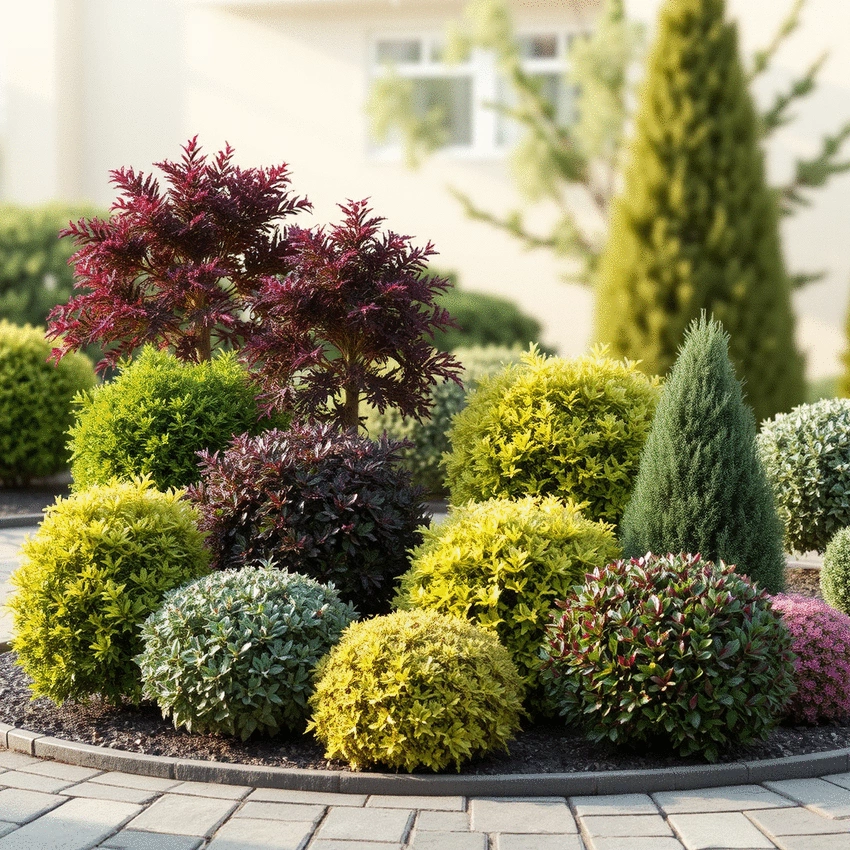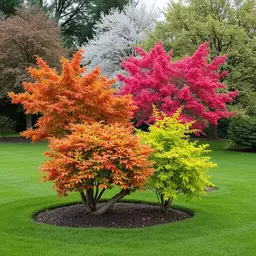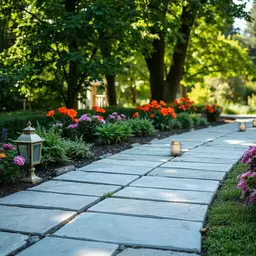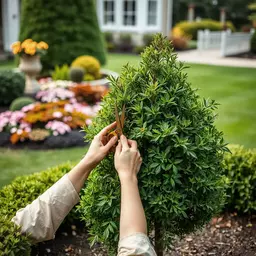Year-Round Trees for Your Landscape
By Celia Fairchild / Nov 02
Every beautiful garden begins with the right choices, and understanding decorative shrubs is key to transforming your outdoor space. These plants not only enhance aesthetics but also provide practical benefits, making them essential to successful landscaping. Are you ready to discover the art of selecting and arranging shrubs for a stunning landscape?
Understanding the essential characteristics of shrubs can greatly enhance your garden's design and functionality. Below are critical considerations represented visually.
Ensure that the shrubs you select are suited to your local climate for optimal growth and longevity.
Consider how tall and wide the shrub will grow to effectively plan your garden layout.
Some shrubs require more care than others; choose varieties that fit your lifestyle and maintenance level.
Shrubs add various heights and shapes, enriching garden aesthetics and creating focal points.
Many shrubs provide vibrant blooms or striking foliage changes throughout the year, enhancing year-round appeal.
They can create privacy, block wind, and reduce noise in your outdoor spaces, making them more enjoyable.
When it comes to designing a beautiful outdoor space, selecting the right decorative shrubs is essential. These plants add texture, color, and structure, making your landscape truly come alive! At Ornamental Yard, I believe that understanding the characteristics and benefits of different shrubs can significantly enhance your garden's overall appeal. For more insights on choosing the best plants for your space, check out our guide on elegant landscaping with decorative trees.
Decorative shrubs contribute to a garden's aesthetic and serve practical purposes as well. They can act as natural fences or privacy screens, create inviting pathways, and even attract pollinators into your garden. With so many options available, it's crucial to choose shrubs that not only fit your style but also thrive in your specific landscape conditions.
Choosing the right shrubs can make all the difference in your landscaping project! Here are some key factors to consider:
By taking these factors into account, you can create a garden that not only looks incredible but is also easy to maintain. Think about your own preferences and lifestyle, and let those insights guide you in your selections! You might also find inspiration in exploring elegant low-maintenance shrubs that fit a busy schedule.
Decorative shrubs provide depth and dimension to your outdoor spaces, making them more visually appealing. They can serve as focal points, frame walkways, or add layers of color and texture. Imagine a garden filled with rich greens, vibrant flowers, and contrasting shapes—it’s a feast for the eyes!
Incorporating shrubs into your landscape design can also improve biodiversity in your garden. By selecting a variety of shrubs, you can create habitats for beneficial wildlife, including birds and pollinators. This harmonious balance between beauty and ecology is something I strive for in every project at Ornamental Yard.
As you explore your landscaping options, let the beauty of decorative shrubs inspire your creativity. Your garden can become a serene retreat that reflects your unique style while providing a sanctuary for nature. Embrace the journey of designing your perfect outdoor space, and remember, at Ornamental Yard, I’m here to help guide you!
To maximize the impact of your decorative shrubs, consider planting them in layers. Position taller shrubs at the back of flower beds, with medium-sized shrubs in the middle and shorter varieties at the front. This not only enhances visibility but also creates a visually appealing backdrop that showcases the beauty of each plant!
Designing a captivating landscape requires an understanding of how decorative shrubs can enhance your outdoor space. By thoughtfully selecting and combining different shrubs, you can create a visually appealing garden that reflects your unique style. Have you ever considered how the right mix of textures and colors can transform a simple yard into a stunning retreat? Let's explore how to achieve that!
When it comes to combining shrubs, consider the following elements:
Having a clear layout can make all the difference in your landscaping success! Start by visualizing where each plant will go based on its growth habits. For instance, taller shrubs should be placed at the back of your garden beds, while shorter ones can fill in the front. This method not only enhances visibility but also creates a natural progression of height and volume! Consider reading about selecting ornamental shrubs for landscaping to further refine your design choices.
Here are some effective layout tips to keep your garden looking fresh and organized:
As we wrap up our discussion on decorative shrubs, it’s essential to remember the key considerations when selecting the perfect plants for your landscape. Choosing the right shrubs can significantly enhance your outdoor space and connect you with nature, making it a true extension of your home.
Here’s a quick recap of some of the top decorative shrubs and their benefits:
I encourage you to visit your local nurseries and explore the vast selection of decorative shrubs available in your area. Taking the time to choose plants that thrive in your specific climate not only promotes sustainability but also ensures a flourishing garden. Remember, gardening should be a joyful journey, so don’t hesitate to ask for advice from local experts—they can offer invaluable insights! For ideas specifically for smaller spaces, consider elegant shrubs for small gardens.
At Ornamental Yard, we believe in fostering creativity and connection with nature through landscape design. Let your imagination run wild, and enjoy the process of transforming your yard into a serene oasis filled with enchanting shrubs and greenery. Happy gardening!
Here is a quick recap of the important points discussed in the article:

 Year-Round Trees for Your Landscape
Have you ever considered how the right trees can transform your garden into a year-round masterpiece
Year-Round Trees for Your Landscape
Have you ever considered how the right trees can transform your garden into a year-round masterpiece
 Creative Walkway Design Ideas
What if your walkway could do more than just lead the way? With the right design, it can enhance you
Creative Walkway Design Ideas
What if your walkway could do more than just lead the way? With the right design, it can enhance you
 Pruning Tips for Ornamental Shrubs
In the world of gardening, pruning isn't just a routine task; it’s an art that can greatly influen
Pruning Tips for Ornamental Shrubs
In the world of gardening, pruning isn't just a routine task; it’s an art that can greatly influen